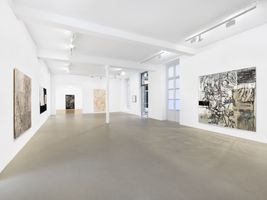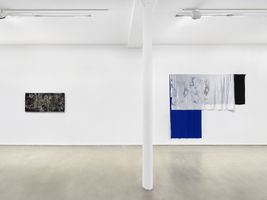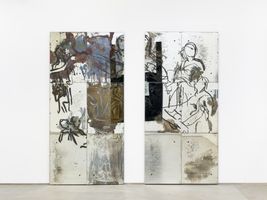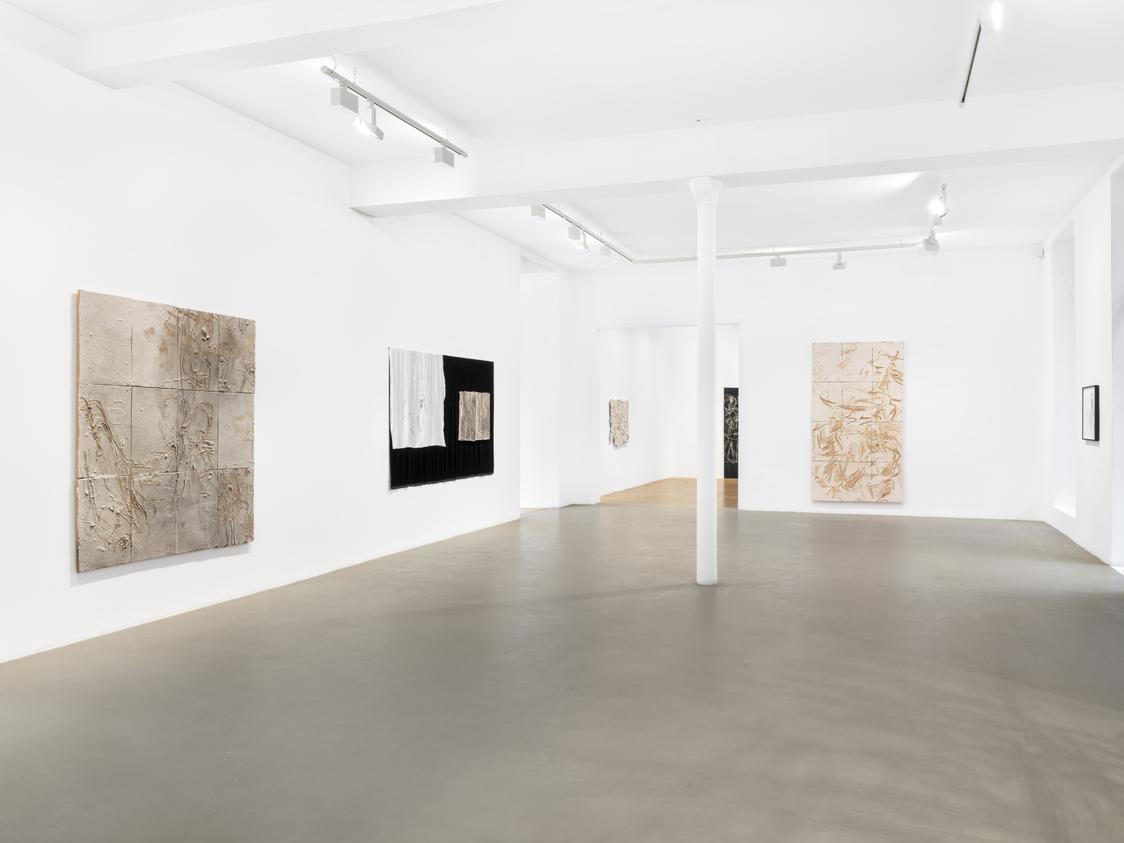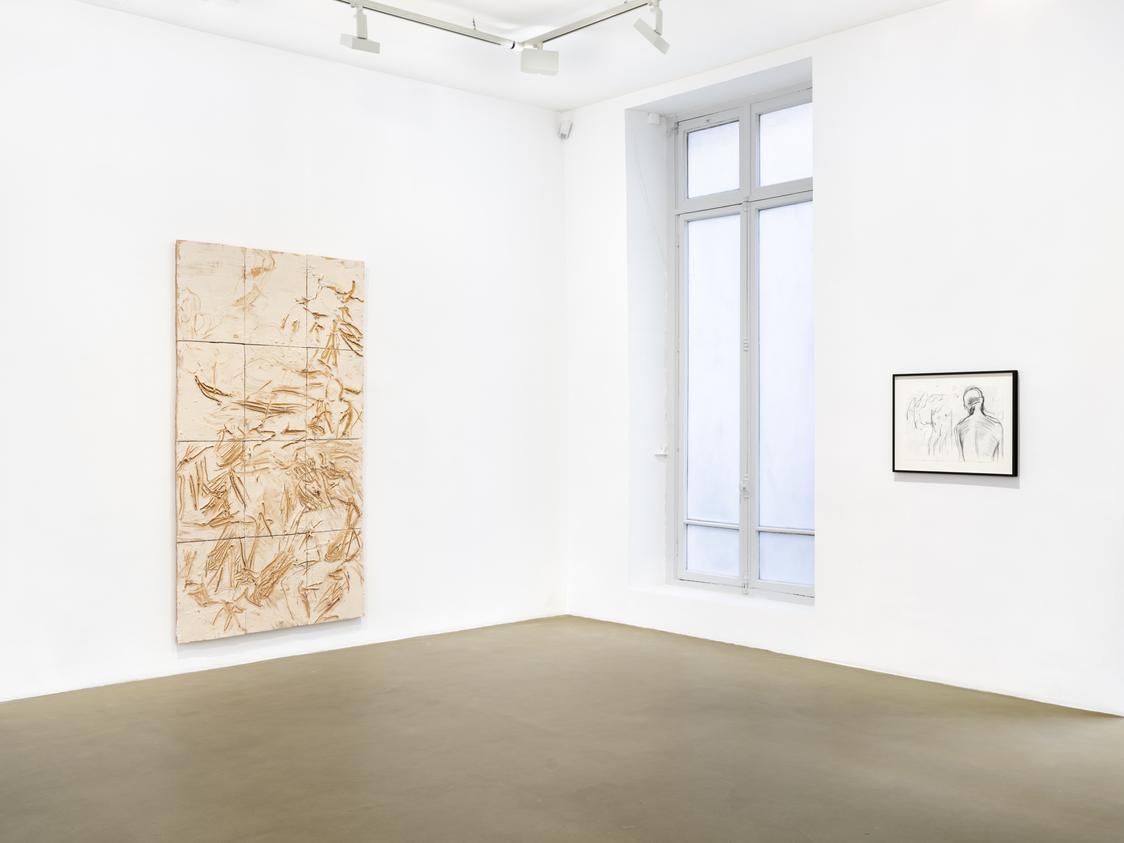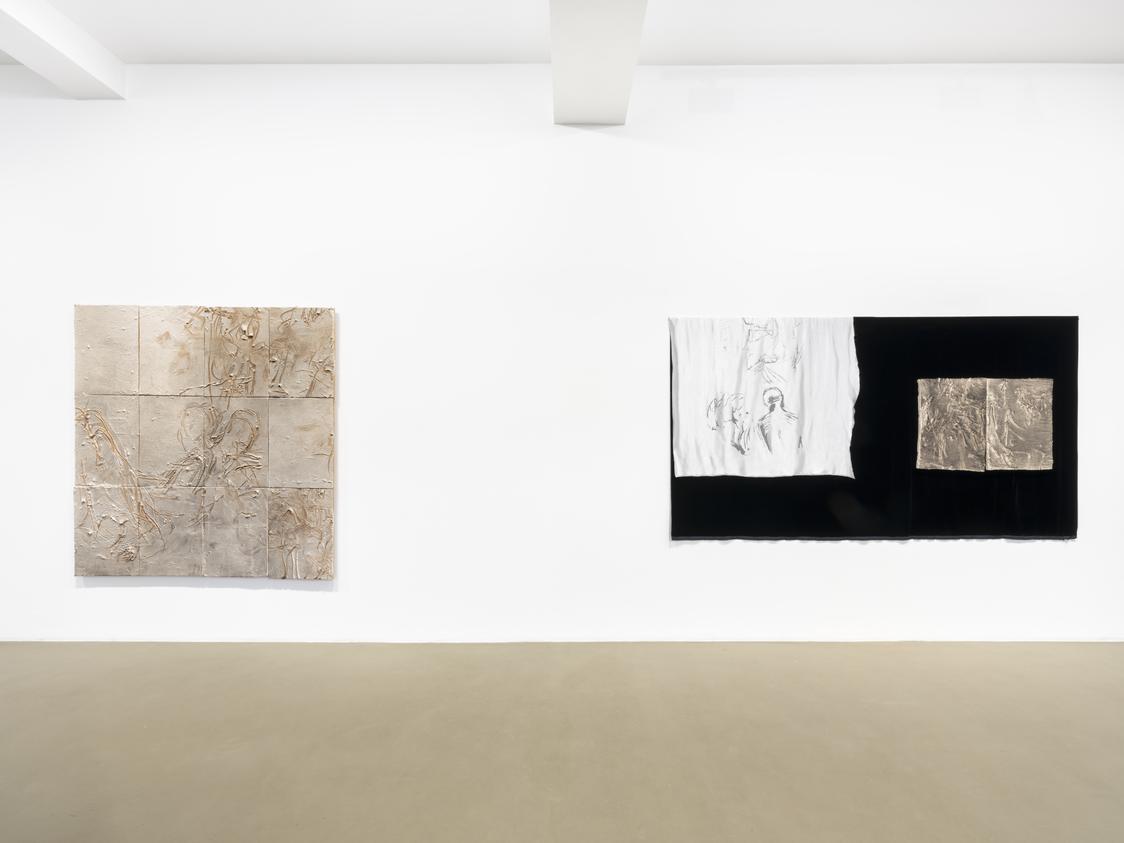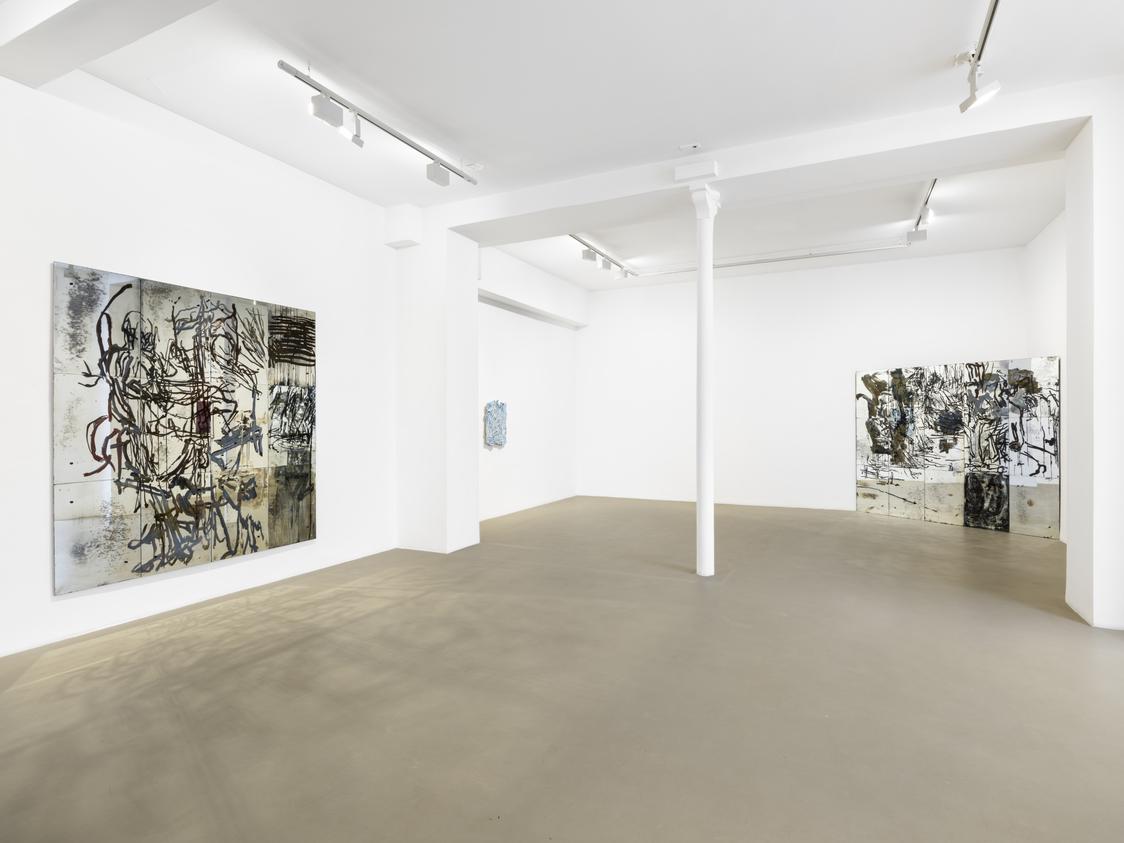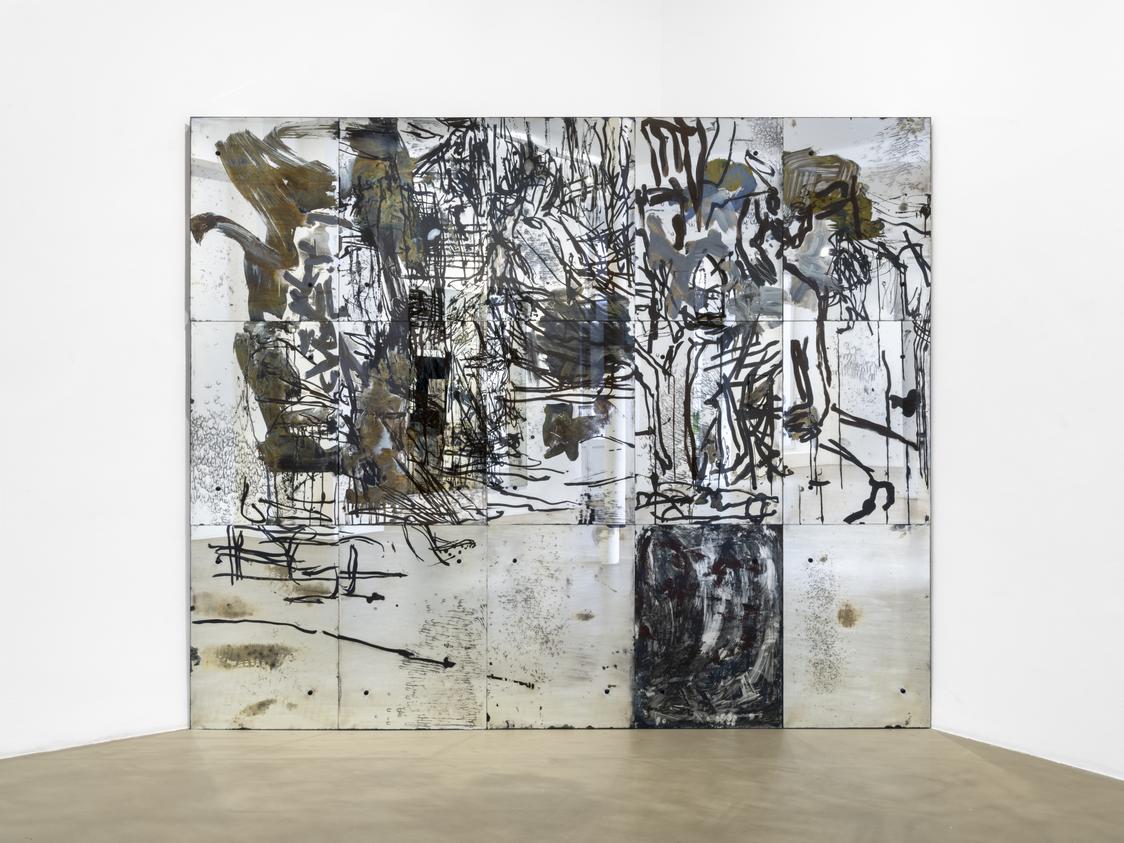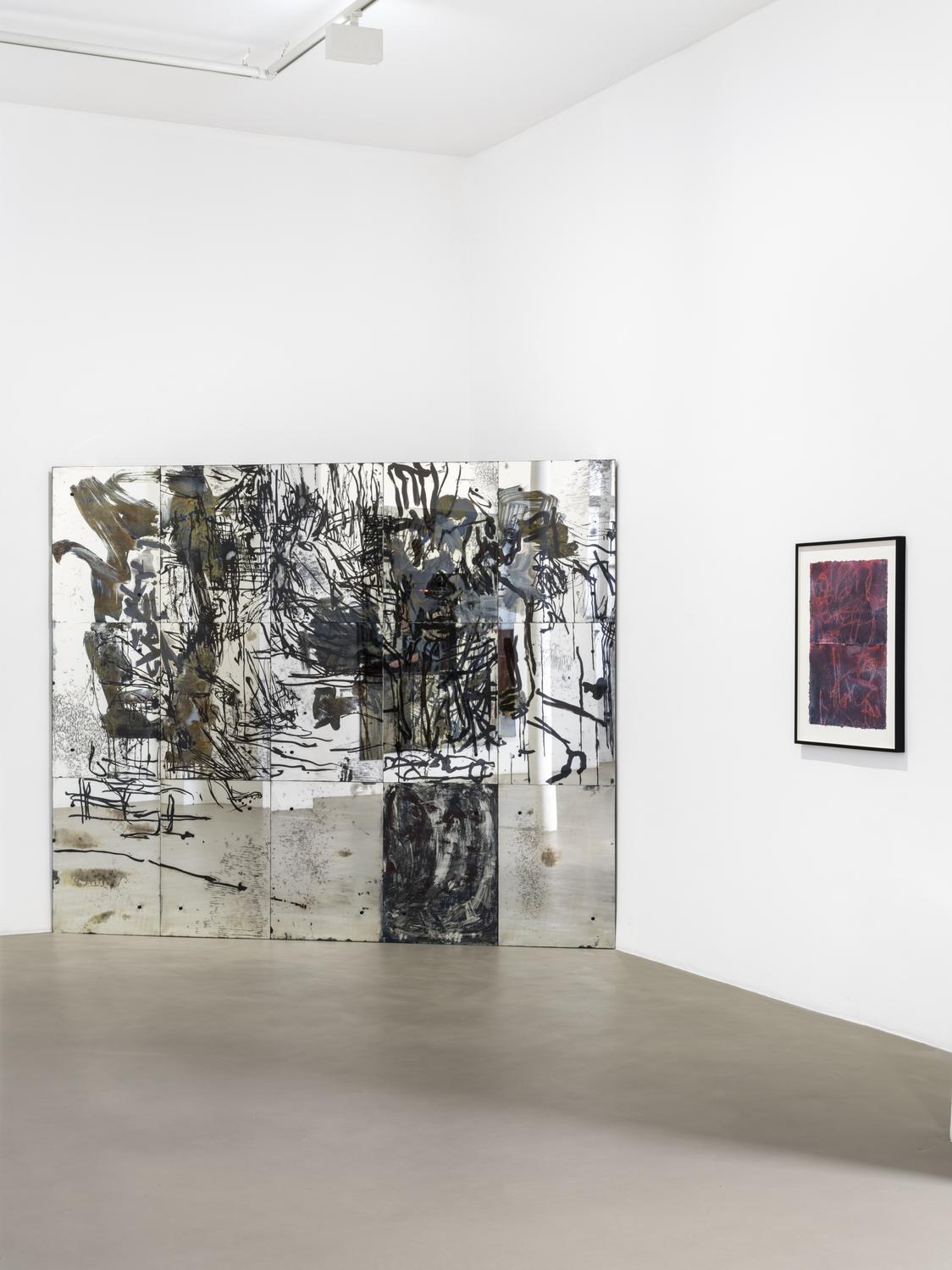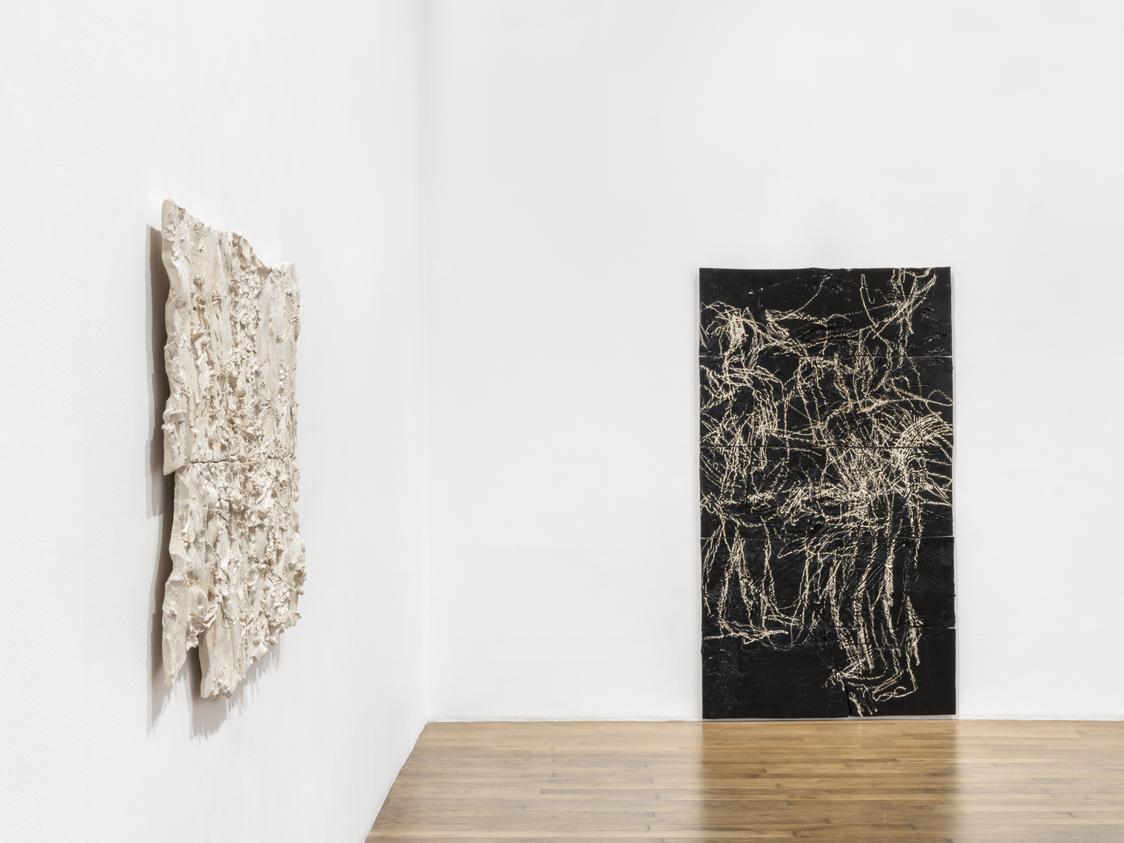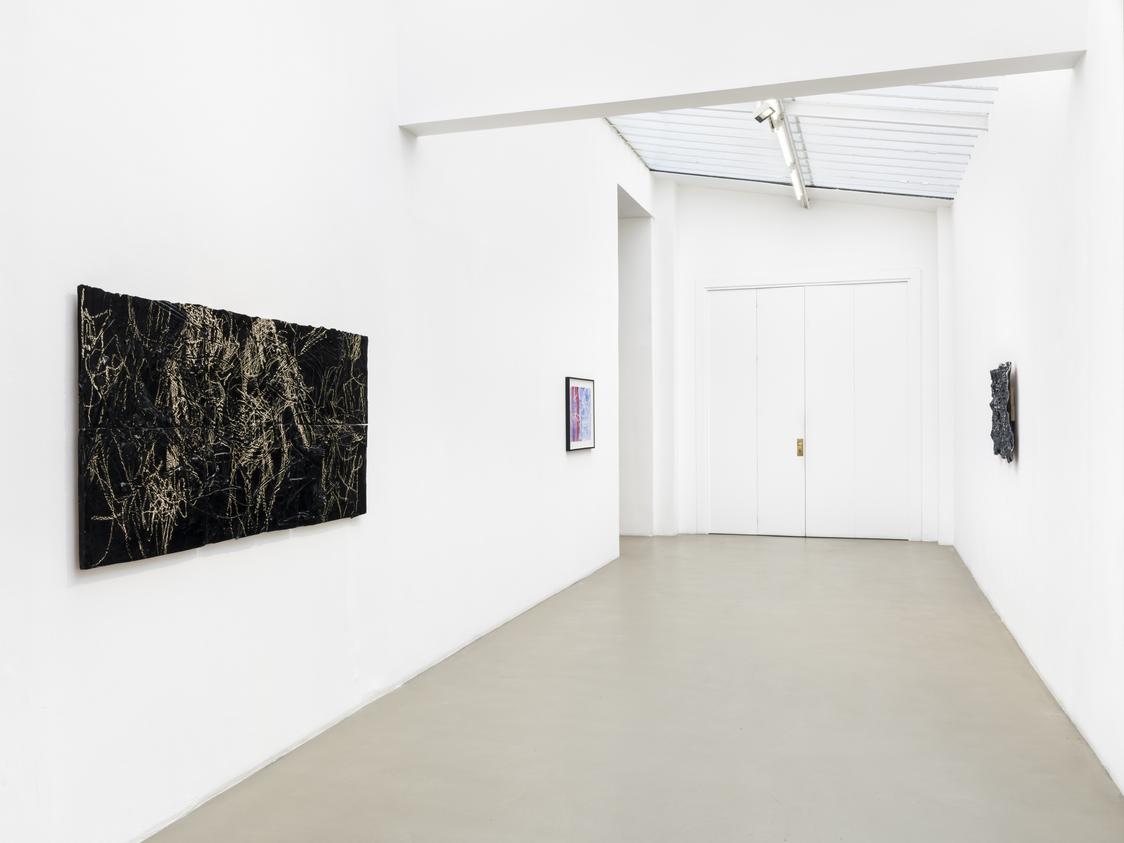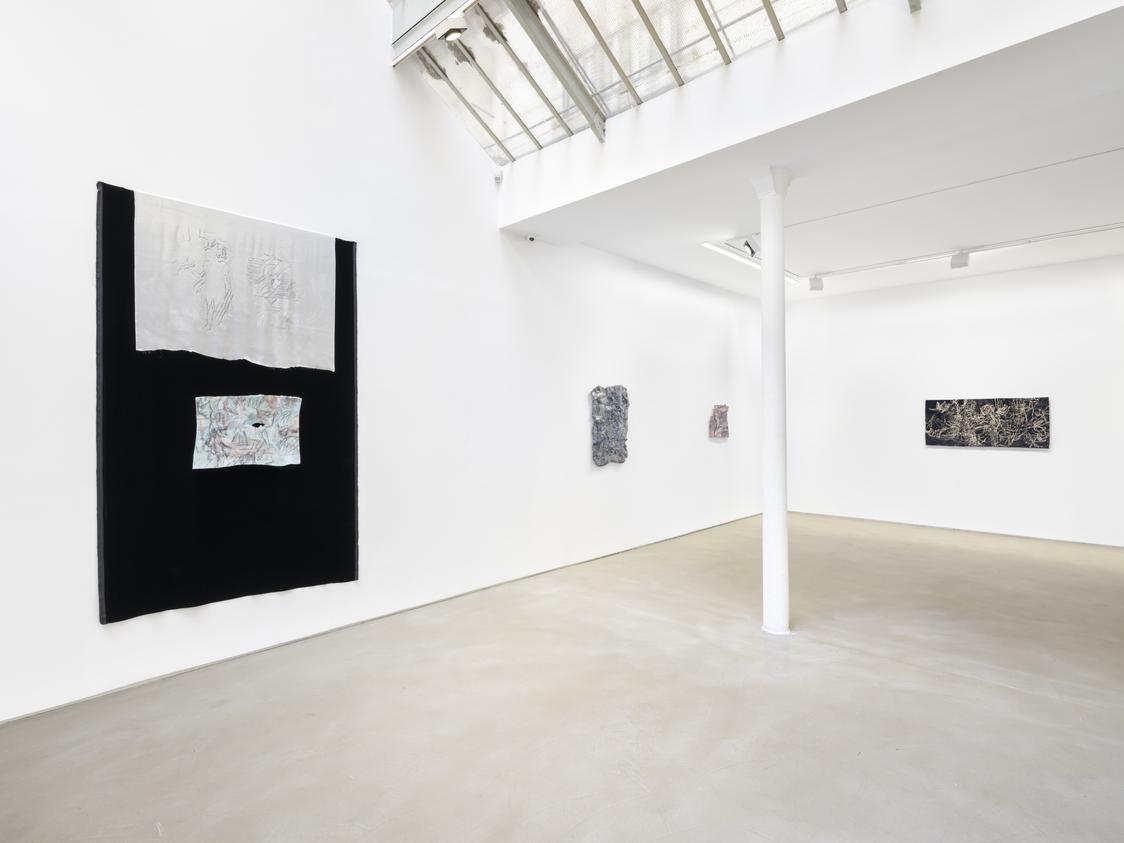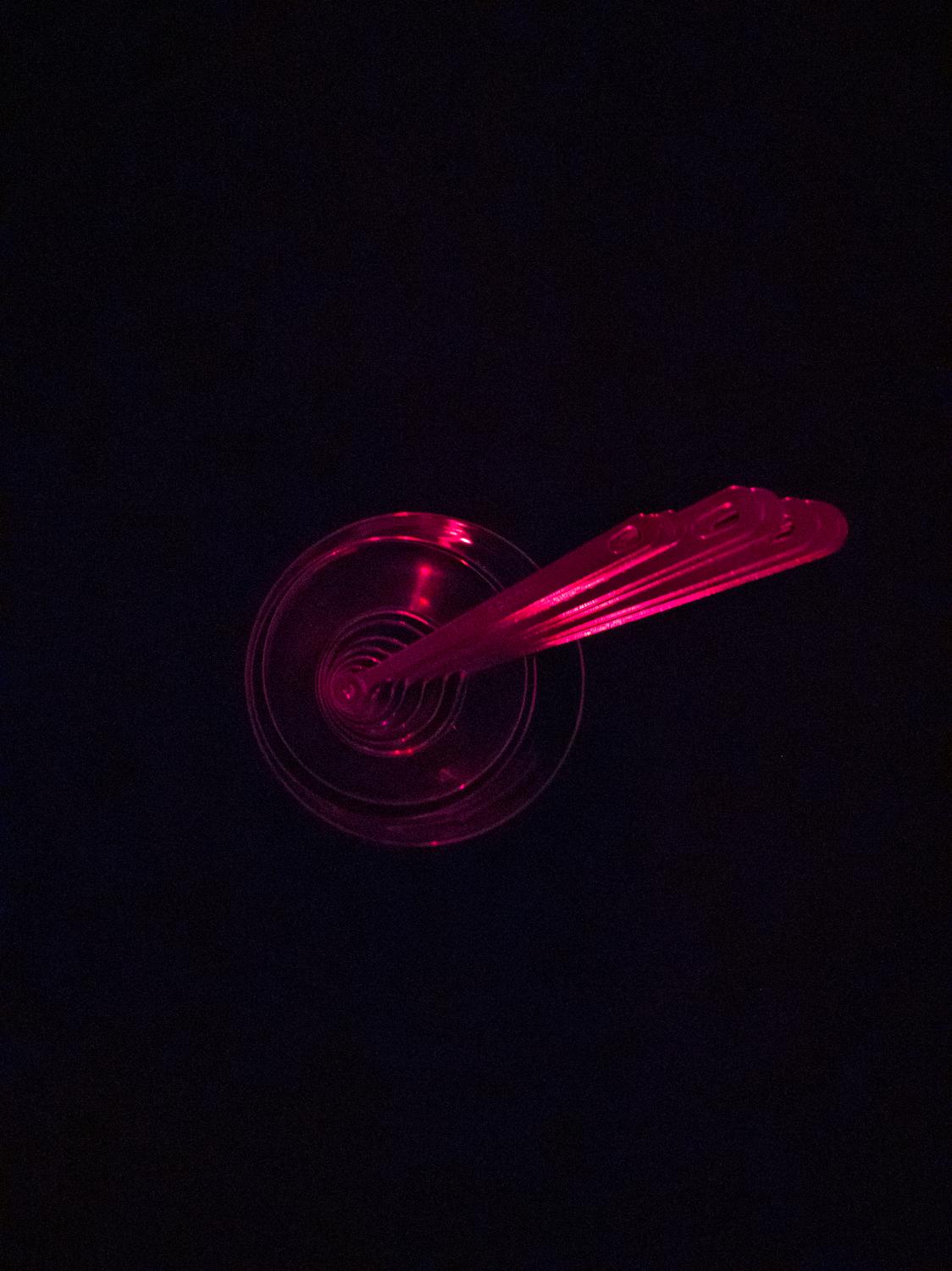Evoking Nick Mauss’ practice could take the shape of a fine uninterrupted line, like a gesture, a breath, extending endlessly over the course of the artist’s encounters. He makes wander the drawing, a medium used for recording ideas, over various supports and spaces. He traces it between events, artistic practices, personal histories that have fallen into oblivion. The artist looks for them in archives, links them in exhibition spaces, and creates a place where elective affinities between works and people are revealed. Slipping into an exhibition by Nick Mauss, one is struck by superimposed images, interlacing connections in a kind of evanescent simultaneity. It might be like seeing bodies moving about a space, on a stage, inspiring and looking at each other, getting tangled up, yet not merging.
For his first exhibition at Galerie Chantal Crousel, Nick Mauss pursues his formal inquiries. He plays with the effects and meanings of materials, with the reflection of his mirrored reverse-painted glass, reflecting the movement of bodies and architecture, with the sensorial quality of the draperies, or even with the unexpected, heightened, malleable materiality of ceramics. The images he makes appear or disappear during the production process, once the shimmering film has been applied, the clay has been fired, the fabric dévoré.
The first space the artist has occupied is the page, the sketchbook. An intimate space that has expanded into larger spaces, to implicate the visitor’s body. Here, the frame of the sheet can be found with its drawings on paper. The pages are joined, sketches of images placed side by side, lines traced. Shapes, abstract figures intermingle with body fragments. As the art historian Emmelyn Butterfield-Rosen has written of the tension between memory and the act of drawing in Mauss' work: “Invariably his drawings register the fact that they are made in series of discrete and disconnected sittings, often separated by intervals of weeks or months. This method of temporal distancing has the effect of leveling, and produces new and imminent relationships—spontaneous marks and motifs derived from a “source” become equal options within a spectrum of possibilites, almost like dealing cards from a shuffled deck. These intervals of oblivion obviously somehow condition the way in which his drawings approximate mnemonic rendering. The mnemonic structure of Nick's work is precisely not that of the Rauschenbergian “flat-bed,” representing memory as the random order of raw data in the mind's filing cabinet. The visual information that appears has been processed, and it's therefore closer in quality to dream-pictures, because what is preserved and represented is something selectively self-constructed and edited”1.
Nick Mauss has taken an interest in practices that have long been confined to the minor arts, craft, or even the decorative arts. For over a decade, he has been interested in ceramics, an unpredictable material. Working the clay and its glaze means imagining the future potential of a line, the interactions of color, the play of transparencies. The artist has developed new techniques in collaboration with the Bottega Gatti ceramics studio in Faenza, known for its secular history of work with artists. The materiality of his ceramics has become more pronounced over time, more sculptural and architectural, with a whole repertoire of traces, whether painted, printed, or inscribed, blending various states of “raw” and “cooked.” The two mural panels on view, in stoneware and terracotta, were made in a quasi-blind process; the white and red clays used have the same color when raw; only after the first firing are the colors revealed. Another series of drawings was made by applying wax to the white stoneware. The image only appears once it is covered with black glaze, the wax serving to repel and prevent the material from being absorbed. The drawing is thus revealed in the negative.
The idea of an under-drawing as an initial, momentary state of a performance that is lost recurs in the artist’s work. He prioritizes the study, the sketch, the emerging image at the limit of the decipherable, over the “finished” work. The series of reliefs in textured and heavily worked clay are carriers for drawings overwhelmed by a form of physicality, for images remembered and remodeled by the body. Others are unglazed but are sprayed with manganese oxide, a pigment used for the paintings and drawings in prehistoric caves, also reminiscent of the patina on statues and sooty urban facades.
The light, voluptuous satin and velvet hanging drapery suggests a more delicate, intimate connection to the body, unlike the fixity and gravity of stoneware. These hangings move with breath. They were made using the dévoré process borrowed from couture, which entails a chemical reaction that etch some elements of the fabric according to a pattern, which then appears imprinted, in transparency. Nick Mauss implements what he calls “acts of translation,” like a drawing on paper made of collapsing memories, photographs, and observations that can reappear modified on another material. In the manner of sgraffito on wet clay, the wax on ceramic, paintings on the reverse side of mirrors, or dévoré satin.
The works made using the process of reverse-painting on mirrored glass address this very directly, entangling the viewer and the exhibition space with the work. Nick Mauss’ mirrored works are the result of an elaborate process extending over time and creating a distance in the process of conceiving, making, and perceiving the work, while also maintaining a form of immediacy. Although paint seems to have been applied to the surface of the mirror, it is underneath the glass, executed on reverse. The paint is then covered in a mirrored surface revealing the image and provoking unexpected reactions, burnt effects, and solarization.
With Close-fitting Night, Nick Mauss brings together for the first time in the same space the full array of those formal languages, developing the sensation of an almost fleeting elusive materiality. The artist seeks to capture the experience of seeing something for the first time. He invents, borrows from surfaces, materials, techniques to elicit the strange feeling of encounter, made visible in the exhibition through a form of drawing, writing suspended in the field of vision and the movement of body.
—
1 Nick Mauss, Geschenkpapiere, with essays by Kirsty Bell and Emmelyn Butterfield-Rosen, 2010, Koenig Books London, United Kingdom, p.136.
